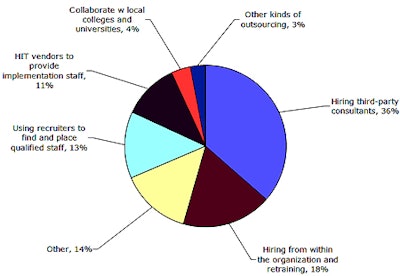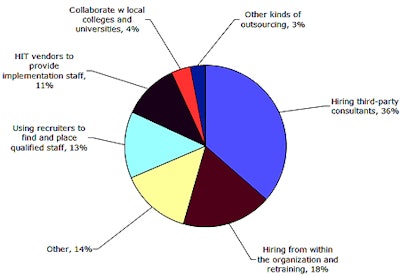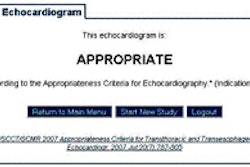
A shortage of IT professionals may impede initiatives by hospitals throughout the U.S. to adopt electronic health records (EHRs), according to a new report from the College of Healthcare Information Management Executives (CHIME).
According to the survey, 62% of hospital chief information officers (CIOs) reported that lack of IT staffing will jeopardize their ability to complete an enterprise healthcare IT project, such as implementing an EHR system, according to the Ann Arbor, MI-based organization.
CHIME queried its CIO members in September to determine current perceptions of IT staffing shortages. Its goal was to understand how shortages would affect EHR initiatives and other IT projects and to learn what efforts are being undertaken to bolster workforces.
Responses were received from an equal percentage of all-sized hospitals. Respondents from provider type were disproportionate, with 41% representing community hospitals, followed by 28% from multihospital enterprises.
Almost 60% of CIO respondents reported that their hospitals were experiencing IT staff shortages, which were most acute at academic medical centers. Professions in greatest demand included clinical software implementation and support staff, including project managers, analysts, application coordinators and trainers, and writers.
Small hospitals and rural hospitals reported the lowest percentage of unfilled positions. CHIME attributed this to both fewer IT positions and geographic location. Large hospitals tend to be located in urban metropolitan areas where competition for qualified IT professionals is fierce.
Such competition was reflected in the fact that 75% of CIO respondents expressed increasing concern about retaining current staff. The strategies to retain them reflected approaches that involved little or no additional cost to a hospital. The most frequently cited strategies involved flexible work schedules and telecommuting (97%) and implementing employee recognition programs (95%). However, 35% were increasing salaries to retain employees, and 21% were offering performance bonuses.
 |
| Chief strategies for coping with IT staff shortages. Image courtesy of CHIME. |
Interestingly, half of the respondents reported that little or no additional funds were being budgeted in 2011 to add staff. Twenty-six percent reported no increases, and 24% reported increases of up to 5%. Third-party consultants are expected to be utilized by approximately one-third of the responding hospitals.
The complete report can be accessed by clicking here.
By Cynthia E. Keen
AuntMinnie.com staff writer
October 12, 2010
Related Reading
CHIME: Meaningful use goals seem achievable in 2011-12 ... maybe, September 20, 2010
Report: 2% of U.S. hospitals meet 'meaningful use' criteria, August 30, 2010
Copyright © 2010 AuntMinnie.com



















